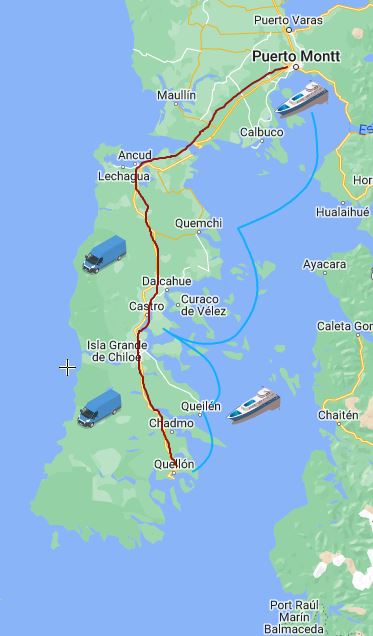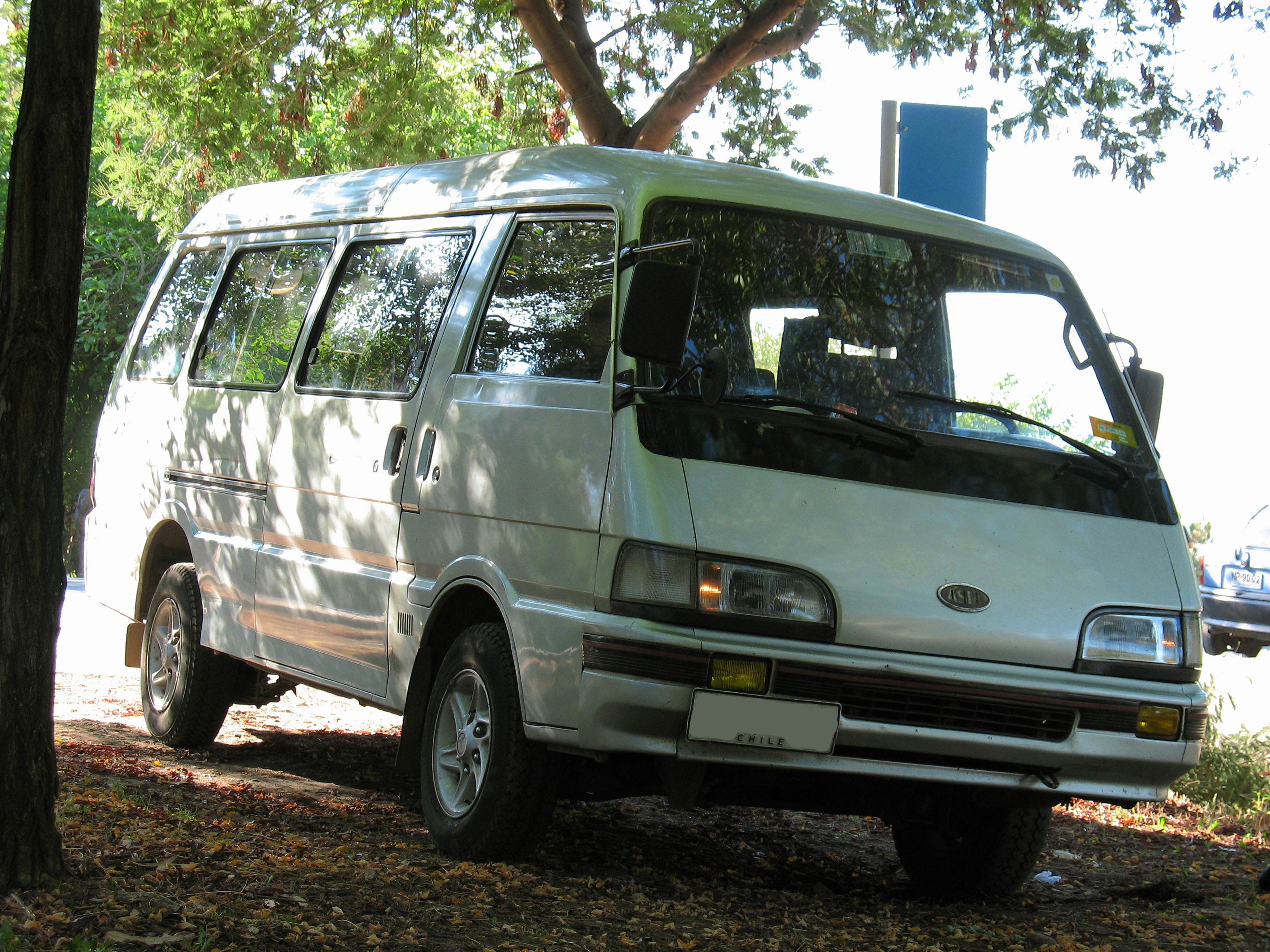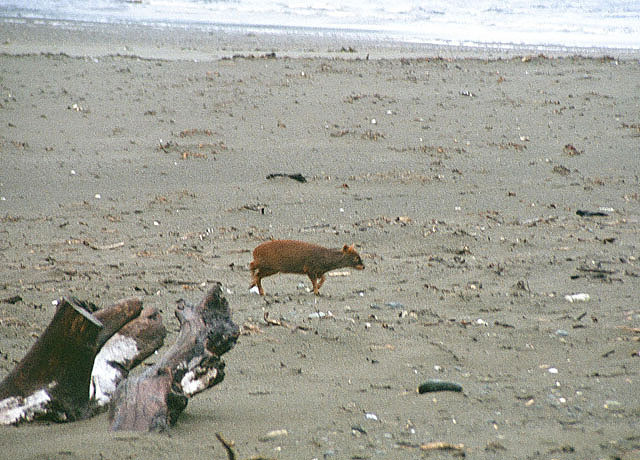 Melinka from Temuco, Chile, CC BY-SA 2.0, via Wikimedia Commons
Melinka from Temuco, Chile, CC BY-SA 2.0, via Wikimedia Commons
Tucked off to the western side of Patagonia lies a set of substantial islands that are just cut off enough that they were the last to be brought into the Chilean republic. As late as 1826, the islands remained a bastion of Spain when the rest of Chile had long been independent.
And yet, a visit to the Archipelago of Chiloé leaves you with less an impression of Spanish colonization and instead something more akin to visiting Ireland or Wales, with bucolic pastures dotted with sheep, wind-swept fishing villages, and wood-shingled churches you will see nowhere else in Chile.
Only recently has a land bridge finished construction connecting the mainland to the archipelago, to the disdain of many locals who preferred the simple pleasures of their isolation. But it has allowed for expanded options for the still relatively few travelers to come and see the extraordinary landscape and experience Chiloé’s unique culture and traditions.

Chiloé is not as far as you might think. It actually provides both the northern and the western entrance to the Chilean part of Patagonia. There are flights to its largest town of Castro, but you can also get there easily by buses that go through the large southern port city of Puerto Montt, which the archipelago protects from the severity of the Pacific Ocean.
Even for luxury travelers, we are not going to recommend the flight. It removes most of the contextual fabric of experiencing the islands and their distinguishing characteristics from the rest of Chile. So you really need to approach Chiloé to feel the magic, not land in the middle of it.
There are three options we’ll recommend for experiencing Chiloé. All of these options consider a level of comfort and style that is tourist-class, and therefore we are not talking about options for extremely low budgets like camping or backpackers (we address those on a different channel).
The least expensive option is sticking entirely to public buses, which in Chile are more comfortable than you might expect. Seats are padded and coaches are climate controlled, but they go from one fixed origin to another fixed destination and do not wander around or cater to requests to stop for photos. These are buses for commuting from point A to point B determined in advance.
However, Chile also includes VIP cabins on its longer distances like from Santiago to Puerto Montt which we strongly encourage. These cabins offer complimentary wine and cheese, blankets, soundproof acoustics, private televisions, wi-fi, and fully reclining wide-bodied leather seating. For a still relatively low price, you will experience more elegance than in the first-class cabin of an airline.
For an example of a traveler starting from Santiago, a beautiful bus itinerary would be:
1) Santiago to Puerto Montt. 13-hour journey, with multiple departures daily. VIP cabin seats are available. Spend a full day in Puerto Montt. This is a significant harbor city that plays an important role in the history of the country in addition to its economy. It has a fine maritime museum, great dining and market districts, and parks and viewpoints.
2) Puerto Montt to Ancud. A short 2-hour journey that could even be a day trip from Puerto Montt if you want to lodge in the larger city. The bus coaches offer only a single class of seating, but they are comfortable. While Castro is the administrative capital, Ancud is the religious capital of the dominant Catholic church, which is simply a signal that Ancud sees itself as the governing seat of the entire archipelago in one sense of historical and traditional governance. We will talk more about what to do in Ancud later.
3) Ancud to Castro. Another 2-hour trip from Ancud brings you to Castro, which is also where the archipelago airport is, and Castro is the largest city on the main island and is therefore the provincial capital. It is also the geographic center of Isla Chiloé, so it would be a logical destination if you wanted to use it as a single base for being equally distant to almost all other parts of the archipelago.
4) Castro to Quellon. The last stretch going down to the southern tip of Isla Chiloe is to Quellon. One important fact about Quellon is that it’s the southern end of the Pan-American highway that began in Alaska. Otherwise, Quellon is a quaint fishing village with a couple of notable museums and markets. It also has beautiful views of snow-capped volcanoes in the distance.
For a slightly higher budget, we highly recommend taking the Chilean ferry system through the archipelago. You will get unmatched views and get to visit islands inaccessible to the world except by the ferry, a truly authentic experience of this magical corner of the world.
The ferries exemplify the pride of Chilean hospitality and are well-maintained, have spacious indoor and outdoor seating areas, tidy restrooms and showers (the showers are used mostly by travelers camping on deck), satellite TV, wi-fi, and a pleasant cafeteria.

To give you a full range of traveling through Chiloe the maritime way, an itinerary would be:
1) Puerto Montt to Chaitén. This is the most popular ferry route from the northernmost starting point for a trip of nine (9) hours. It makes a mid-way port-of-call in Ayacara for passengers to take a stroll around this remote fishing village. Chaitén is a small town sought out not so much for itself but as the entry point to the Pumalin national park and the dramatic volcano also named Chaitén. The park has several great hiking trails, and because of its inaccessibility, you have a lot of raw nature to yourself.
2) Chaiten to Castro. Hop across the great Gulf of Corcovado that separates the mainland from the archipelago’s largest island, with your destination of the Chioé’s largest town and administrative capital, Castro. This is just a five-hour journey, and Castro welcomes visitors with several lodging options and restaurants, plus in-town entertainment, and connections to outfitters who can provide tours of the island.
3) Quellon to Puerto Chacabuco. After a short 2-hour transfer by bus from Castro to Quellon, set off for the grandest of all the Chiloé naval cruises through the inland waterway passages of Patagonia to Puerto Chacabuco. This is 32 hours in total but makes many ports of call along the way so that you can get off and stretch your legs on dry ground and get some souvenirs. There are no private cabins on board the ferries, but the seating is spacious and can be reclined into a sleeping position, plus you have use of the ship’s clean shower facilities. The scenery along the inland waterways is some of the most stunning in the world, so the trip is well worth it. Puerto Chacabuco is in the heart of Patagonia, so if you’re coming here you must be ready for hikes and outdoor excursions, especially to Coyhaique National Reserve and Quelaut National Park which are home to primeval forests and dramatic waterfalls.
If time is more of a concern than cost, or you want to get the most up-close and personal experiences of Chiloé, there are a variety of packages using private transportation that can pick you up from your hotel or the airport. We will cover a few of these, but the possibilities are endless and it’s better to consult one of our travel experts to customize a private itinerary for you based on your specific desires.

1) Chaiten. A combined lodging package includes private transport to your choice of several activities around Chaiten, including river rafting at Futaleufu, fly fishing right out your front door on the Yelcho lake, and guided treks to the area’s pristine natural parks, glaciers, and volcanoes.
2) Castro. From the airport, bus terminal, or your hotel in Castro, we have comfortable and clean vans to pick you up and drive you anywhere on the main island of Chiloé. If you want to visit the other towns, we can take you to Ancud, Quellon, Queilen, Dalcahue, or even to the smaller islands aboard the ferry to Achao and Traiguen. The service is also the only choice for visiting the mystical oceanside forests to go hiking, like most popularly to Cucaco, but also to the remote lake of Chaiguata. For terrific fun, we’ll connect you with the wooden train that you can take through the forest to Chepu, a river town not far from the ocean beach. The Castro private transportation option is not a full tour guide and focuses on transportation, but it is family-run and they are happy to share with you their own highlights along the way of your trip.
3) Puerto Montt. If you prefer to be based in the largest city in the region, we have a great private service in Puerto Montt. Their focus is mostly on city tours but also can accept extended private visits to nearby Ancud, Calbuco, Puerto Varas, and Frutillar. Only Ancud is technically part of Chiloe, the others are mainland visits part of the beautiful Bio Bio region that also shares Puerto Montt as a hub.
To inquire about any of the above private options, or to ask for something different you have in mind, please use our contact form to get in touch.
Traveling around Chiloé, it becomes obvious it is a favorite for young travelers going camping. There are tents on the deck of the ferries, and Patagonia-bound students with huge backpacks on their shoulders. But we’ll recommend here five things to do for travelers who are not that profile and instead looking to see the archipelago with a first-class ticket.
If you can’t beat the camping craze, join them – but on your terms! There are at least three locations in Chiloé (Chaiten, Castro, and Queilén) that provide exquisitely provisioned natural lodging that can get you feeling embedded in the forest or fields of archipelago life, without the mess. Some of the cabins were designed by architects specifically with glampers in mind, while others are renovations of small structures on family property that they have gone to great lengths to make into luxurious lodging nestled into the trees.
Just outside of Chaiten, the unmatchable lodge of Yelcho offers a variety of expeditions into the Chiloé part of Patagonia for travelers who prefer more refined itineraries. One such outing that truly melts away the worries of the world is the serene activity of fly fishing for trout in Laguna Yelcho, a lake framed by majestic mountains and evergreen forests. 5-day and 8-day itineraries are available that take travelers not just around the lake, but the surrounding rivers and streams that are the best spots. Because of its prime location, there are also sea fishing expeditions you can take for tuna and mackerel, too!

There are many birding and wildlife expeditions around the islands, including whales and penguins off the coast. But in our opinion, the best of them all is the Tepuhueico woodlands southwest of Castro on the Pacific coast. One such package includes a stay at the park’s exclusive and award-winning lodge with restaurant service and a native garden. Then guided tours set out from the lodge over the course of three days to encounter endemic and threatened species that are the Pudu Deer, Kodkod Cat, and Darwin’s Fox. Birds you will see are the Rufous-legged Owl, Slender-billed Parakeet, Chilean Pigeon, and Magellanic Woodpecker.
While most travelers to Chile head for the eastern and southern reaches of Patagonia to see the glaciers and mountains in places like Torres del Paine, what they miss is the maritime aspect that has much more cultural and historic roots, not to mention incredible and unique landscapes. We encourage travelers of any budget to take the road less traveled to the archipelago of Chiloé, but for luxury travelers, there is even more magic and mystery to be found because so much of the islands remains remote and ruggedly untouched.
.
South America Buses (SAB) is the luxury channel of AndesTransit, the land travel transportation schedule and reservation hub preferred most by travelers to Latin America. SAB has a select team of distinguished travel experts who have dedicated themselves to research, document, and curate routes and carriers in South America that meet nothing short of the highest quality standards in land travel.
Other Links
Copyright © 2024 SouthAmericaBuses. All rights reserved.
